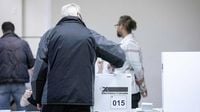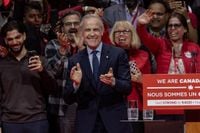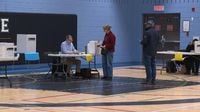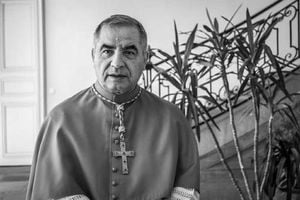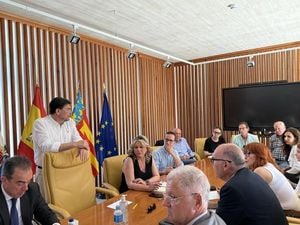On April 28, 2025, Canadians headed to the polls after a 36-day election campaign to determine the next government of Canada. Polling stations across the country remained open until 9:30 PM, allowing voters ample time to cast their ballots. Early reports indicated a strong turnout, particularly during the morning and late afternoon hours as many took advantage of the opportunity to vote before or after work.
In the Drummond constituency alone, there were 88,085 registered voters. During advance voting days, 16,928 citizens participated, which represented a participation rate of 19.22%, slightly up from 17.86% in the last federal election. This increase in early voting reflects a growing engagement among the electorate, driven by pressing issues such as economic concerns, climate change, and a desire for political change.
As voters made their way to polling stations, they expressed a variety of motivations for participating in the election. Josée Bélisle, a voter, humorously stated, "It's important to vote because things are going poorly! When we vote, we have the right to complain; if we don't vote, we can't complain." Others, like Edgar Rugira, emphasized the significance of representation in decision-making, saying, "It's also a civic duty. It's important to have a say in what will be decided."
While the official participation rate for the day was not yet available, Elections Canada indicated that indicators suggested a strong turnout was anticipated. The advance voting had seen a notable 25% increase compared to the previous election, with over 7.2 million ballots cast prior to election day.
The election saw the Liberal Party, led by Mark Carney, poised to form the next government after Monday's results revealed that they had accumulated 144 seats against 122 for the Conservative Party. The two parties were neck-and-neck in a similar number of ridings as around 94% of the votes had been counted by early morning. Most outgoing ministers were re-elected, including prominent figures such as Dominic LeBlanc and Mélanie Joly.
However, the night was not without its surprises. The Conservatives gained at least six ridings from the Liberals and four from the New Democrats. Pierre Poilievre, the Conservative leader, was trailing by about 1,700 votes in the Ontario riding of Carleton, a lead that eventually confirmed the victory of Bruce Fanjoy with over 3,000 votes ahead.
In a significant turn of events, the New Democratic Party (NDP) faced a severe defeat, with its leader, Jagmeet Singh, among the members who lost their seats. The NDP managed to secure only four elected officials, including Quebecer Alexandre Boulerice in Rosemont–La Petite-Patrie, far below the twelve required to maintain recognition as a parliamentary party. Singh's resignation followed this disappointing outcome, marking the end of his eight-year tenure at the helm of the party. "It has been the honor of my life to serve the people of Burnaby-Centre," Singh said in an emotional speech, thanking his supporters and emphasizing the importance of a party like the NDP in the political landscape.
Despite the setbacks for the NDP, the Bloc Québécois also performed notably, with Yves-François Blanchet being among the first leaders confirmed to have been re-elected. The Green Party saw mixed results, with Elizabeth May re-elected in Saanich–Gulf Islands, while her co-leader, Jonathan Pedneault, was defeated in Outremont, Montreal.
At the time of the House of Commons' dissolution, the Liberal Party had 152 MPs, the Conservative Party had 120, the Bloc Québécois had 33, the NDP had 24, and the Green Party had two. There were also three independent MPs and four vacant seats. With approximately 28.5 million people registered on the electoral list, they were tasked with electing 343 MPs, an increase of five from the last election due to electoral map changes.
Voter enthusiasm was palpable across the country. Jessie Langlois, 56, expressed her sentiment, saying, "At home, voting is very important. If we didn't have democracy, we would cry to have it." Many voters were motivated by the desire to send a message, particularly in light of the current U.S. political climate. Alice Charasse, 37, remarked, "We must not be intimidated or influenced by the American president."
In Sherbrooke, polling stations were busy in the morning as people lined up around 9:15 AM, eager to cast their votes. Although the turnout rate there was unknown, the enthusiasm was evident. Voters were reminded that they could vote until 9:30 PM, provided they had proper identification.
Despite some technical difficulties with the Elections Canada website on election night, which left some voters frustrated, the overall process unfolded smoothly. Florence Ryan, a regional media relations advisor for Elections Canada, noted the heightened involvement of the public in this election, stating, "We see that there is significant enthusiasm in both traditional and social media, and the population is very engaged in this election."
With a record number of voters participating, including 8.5 million who had already cast their ballots by the time polls opened on April 28, the election reflected a growing trend of civic engagement. This included not only advance voting but also substantial participation on college campuses and mail-in ballots, highlighting the importance of accessible voting options.
As the dust settles on this election, the implications for Canadian politics are profound. The Liberal Party's victory suggests a continued preference for their policies, while the NDP's struggles may prompt a reevaluation of their strategies moving forward. With pressing issues like climate change and economic stability at the forefront, the new government will face significant challenges as they seek to address the concerns of a diverse electorate.
